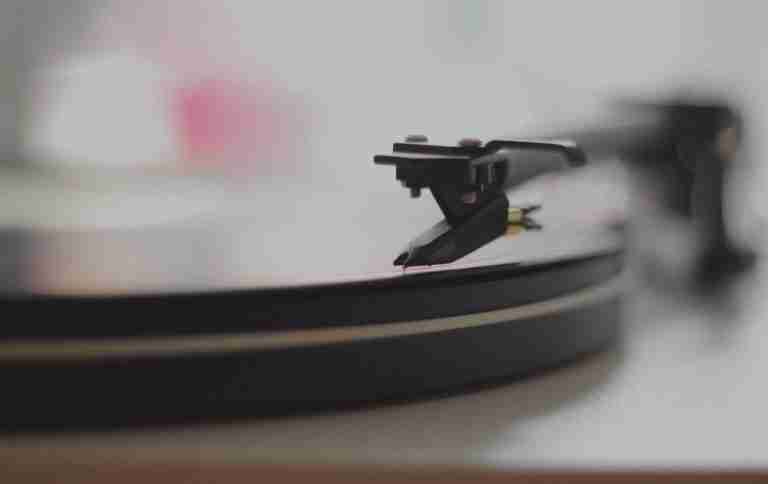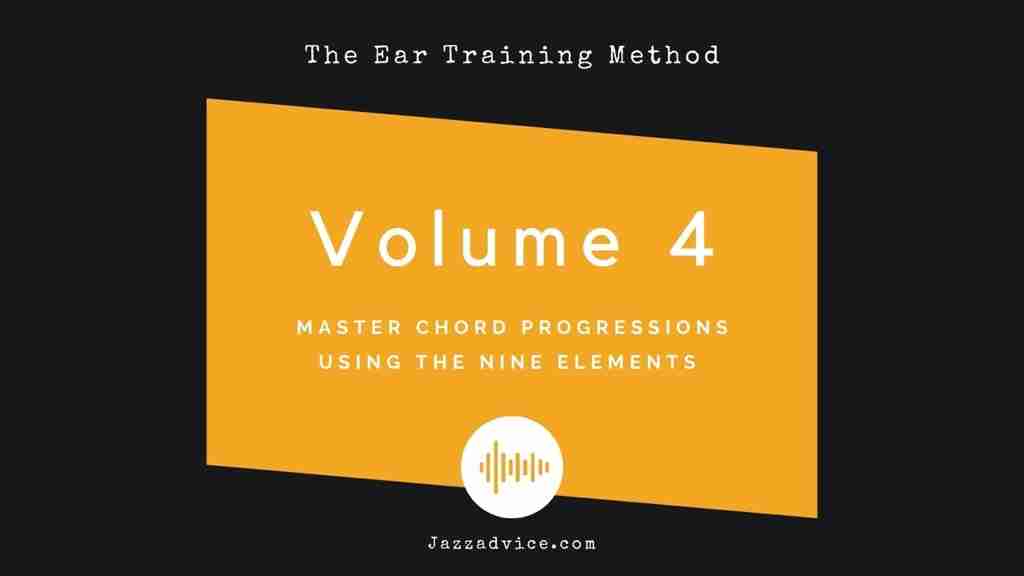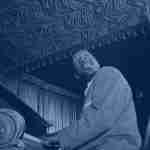Learning jazz standards is a crucial part of every jazz musician’s practice routine. After all, as a jazz musician, the entire goal is to perform tunes, so it totally makes sense that they should be a central part of your practice…
Now, when it comes to learning tunes, it’s how you first learn them that matters more than you think – Most people’s process starts with a lead sheet, a fake book, or a play-along, immediately giving them the chord changes with no effort, thought, or struggle…
But if you really want to learn a tune it takes a completely different approach from the very get-go!!
FORGET the lead sheets, fake books, and play-alongs…
Forcing yourself to learn tunes straight from a recording, working through the struggle and using your ear will have more benefit to you than you can possibly imagine – in fact, it’s actually the struggle and effort you put in at these early stages of learning a tune that helps your brain and body remember the information you’re learning in a much deeper and permanent way…
Anything you learn with your eyes from a fakebook will NOT stay with you unless you constantly review it. Anything you truly learn with your ear will stay with you for a lifetime.
You can completely change how you learn and approach jazz standards and make this transition, but it takes a shift in mindset and a willingness to put in the dedicated work.
Today we’ll share with you a few powerful tips on learning tunes that if you put into practice, will make you wonder why you haven’t been learning standards this way all along…
First impressions matter more than you think
The way you hear tune in your mind and think about it as you go to take a solo has a lot to do with how you were introduced to the tune in the very beginning – First impressions are everything!!
Take for instance some of the ultra classic jazz standards like All the Things You Are, Just Friends, or Stella By Starlight…
Unfortunately, many people today learning jazz think these are boring songs, when in actuality, they’re nothing of the sort…but I totally get where they’re coming from, because I remember a time not too long ago where I also found these tunes boring and lame.
But why? Why do certain tunes have no spark, no energy, no life and feel like they’re just some cheesy exercise??
This might come as a surprise, but when it comes to learning jazz standards, It’s all about first impressions – how you were first introduced to the tune matters.
Think back to when you first learned a tune…Was it an assignment? Did you hear it for the first time from a play-along track? Had you never heard a real recording of it and just played it from a lead sheet?
All of this history plays an important role in how you now think about, hear, and play over a specific tune.
As you begin to conceptualize a tune, it becomes an entity in your mind with a certain vibe, structure, and physicality. The way you first learn a tune and what material you’re initially exposed to creates this vibe and structure.
So, those tunes you first heard from a play-along recording will implant themselves into your brain the way they sound on the play-along and before you know it, that’s how you hear it…instead of hearing the incredible vibe and energy from a REAL recording like the feeling you get when you listen to Kind of Blue, you’ll have the boring, lifeless feel of a play-along recording looping in your ear.
Sound familiar?
To be clear, I’m not talking about some new-age energy-field nonsense – I’m talking about a very simple concept: WHAT you listen to, play along with, and study influences you in a unique and deep way.
No matter how good the players are on some back-up-track, they’re not going to compare to a group of your heroes playing the tune in a real situation…It’s actually not even a comparison, they’re just two completely different entities…
One is a genuine performance created for the purposes of artistry and music, while the other is a quick run through of a lead sheet for the purposes of a mass produced practice aid.
Don’t get me wrong, there are plenty of ways to make great use of play-alongs, but for conceptualizing the feel and vibe of a tune, the essence of it that will permanently be stored in your consciousness, you may want to rethink how you introduce yourself to a tune because it matters more than anything else!!
Be careful and aware of how you first introduce yourself to a tune and make it a point to ingrain the sound of one of your favorite recordings of a tune before hearing or working with a play-along track. By doing this, you’ll easily fall in love with the real beauty of the tune and begin to form a solid mental and aural relationship with it.
Follow Phil Woods advice on learning tunes
When I was seventeen, I sat in a masterclass with legendary saxophonist Phill Woods. Once everyone was done asking him what mouthpiece he played, we could finally get to the things that mattered!
When we asked him about how he learns tunes, he said something I’ll never forget…“If you can’t play the tune on the piano, you don’t know it.”
Students immediately responded…“But I don’t play piano” and, “I don’t have a piano,” and a bunch of other remarks trying to dismiss the legends advice…
Phill Woods did not see these remarks or anything anyone said as a valid excuse, and he’s totally right. You can grab a midi controller for dirt cheap today and as for not playing piano…Phill Woods yelled back at all the students…
“Anyone can sit down at the piano, and plunk out two-note voicings. Anyone!!!”
He’s more than right…and I can tell you from personal experience, that playing through two-note voicings of a jazz standard at the piano might be the most overlooked, yet most beneficial thing you can do to learn the harmony of a tune.
Try it right now – Pick a tune you know, sit at the piano, and play two-note voicings:
- Play the root of the chord in your left hand
- Play the 3rd and 7th of the chord in the right hand. That’s it.
Once you do this, you can add notes that help clarify each particular chord if you want to, for example, on a half-diminished chord, you can add the b5, or on a dominant b9 chord, add the b9.
But, you don’t even have to add in these extra notes – just plunk out the two-note voicings as Phil said. That’s where you start and that will help you a ton…
As you do this, you’ll actually hear the chords, which is an ear-opening experience for most horn players, and you’ll begin to understand how the chords fit together and progress from one to the next to create the overall harmony.
And for extra guidance, make sure to check out this lesson on How to play jazz standards at the piano.
Seeing and hearing these relationships are key to learning any standard. Remember, If you can’t play two-note chord voicings at the piano, you don’t know the tune.
Use everything on the recording
A lot of people tell us all the time that they don’t have any problem learning the melody from a recording, but they can’t for the life of them learn the chord changes straight from the recording…
In fact, many people find it near impossible!! – If this sounds like you, make sure to check out The Ear Training Method…the brand new addition, Volume 4 on Mastering Progressions, will give you the ability to hear the changes in any standard through systematic training.
Now, if you can’t hear changes easily, don’t worry…you’re not alone. At first it seems like a daunting task. I have to listen to the piano player and hear every chord?
And here in lies the problem. It seems logical to learn the melody from the melodic instrument, like the horn player, and then learn the chords from the bass and piano player. In actuality, there are many more hints on a recording to learning the changes that make it much easier than you may have initially thought.
You need to use everything on the recording to figure out, well…everything. When you’re learning the melody, don’t just learn the melody. Try to hear how each note lays against what the piano player is playing. Try to hear where the bass movement is going.
If, for example, you learn the first part of a melody and it feels and sounds like it’s over a major chord, try to figure out what chord-tones you’re playing. Does it sound like you’re playing the 3rd of a major chord or the 5th?
Or, did you just hear the bass line just shift suddenly when the melody took a slight turn? Again, use the notes in the melody to help determine what you might be playing over.
Everything is related.
You can do the same thing with part of a solo. Transcribe an ‘A’ section of the tune and you’ll have a ton of hints to what the chord progression is. Always be thinking that there are multiple ways of figuring out your musical problems.
When you can’t determine quite what the piano and bass player are playing, turn to the soloist. When you can’t get anywhere with any of them, go to the next chorus in the same spot. When you can’t get anywhere there, go to the next soloist…
There are so many chances to hear what’s going on. It is challenging, but it’s much easier if you use everything you’re hearing on the recording.
One tune = one project
When you’re trying to learn a tune, it helps to approach it as an ongoing project…
Today, figure out what’s going on in the first four measures. That’s it. Just the first four measures. You can listen to the whole tune, you can use the whole recording, but your goal is to just figure out what’s going on in the first four measures.
With some focused time and attention on what you’re hearing, you can easily learn the melody and changes straight from the recording in those first four measures.
Then, the next day, focus on the next four measures…and each day continue like this until you’ve learned the entire tune.
Now, this is just a suggestion. You can break it up how ever you see fit. The point is that for most beginners, attempting to tackle the entire tune all at once is quite challenging…so DON’T!!
Instead, break it up into manageable chunks, like 4 or 8 bars at a time. Gradually, as you learn more and more tunes in this manner, you’ll be able to recognize these chunks of chords in other tunes, making it easier and easier to learn straight from recordings in a quick and effective manner.
Connect the melody with the harmony
As you first learn tunes from recordings, it’s natural to learn it in piecemeal: you learn the melody, then you learn the chords, then you learn the form. The eventual goal is to learn tunes more as a holistic unit as described in ‘Use everything on the recording’.
Whether you pieced it up or learned the chords as you learned the melody, you want to go back and hear how everything is functioning simultaneously. Start out by playing the melody and consciously knowing what every single note of the melody is in relation to the chord it’s played over; understand the bigger picture of how the melody functions with the harmony.
Supposing you transcribed a chorus or an ‘A’ section of a solo to assist you in figuring out the chord changes. Now, take this section you transcribed and play it slowly, knowing exactly how each line functions with the harmony.
In both of these exercises, you’re strengthening your knowledge of how the chords sound and how lines, whether it be the melody or a solo section, flow over them. Everything you learn about a tune, bring it back full circle into one conceptual unit.
5 not-so-secret-anymore secrets to learning tunes
Believe me, I call these secrets because they took me years to figure out. In retrospect, they seem like obvious and borderline no-brainers, and you’re probably thinking, how can these be secrets?
Well, honestly can you say you’ve ever given any thought to how you introduce yourself to a tune? When’s the last time you played two-note voicings or made sure you were using everything from a recording to aid in figuring it out? Have you ever thought about maybe it’s difficult for everyone to approach an entire tune from a recording, and that breaking it apart into super small chunks could make it manageable? And how about connecting the melody with the harmony…which tunes feel like one cohesive unit in your mind?
Perhaps they are (were) secrets. And now you know them. Learning tunes from recordings just went from ridiculously-super-challenging to just pretty-challenging.












